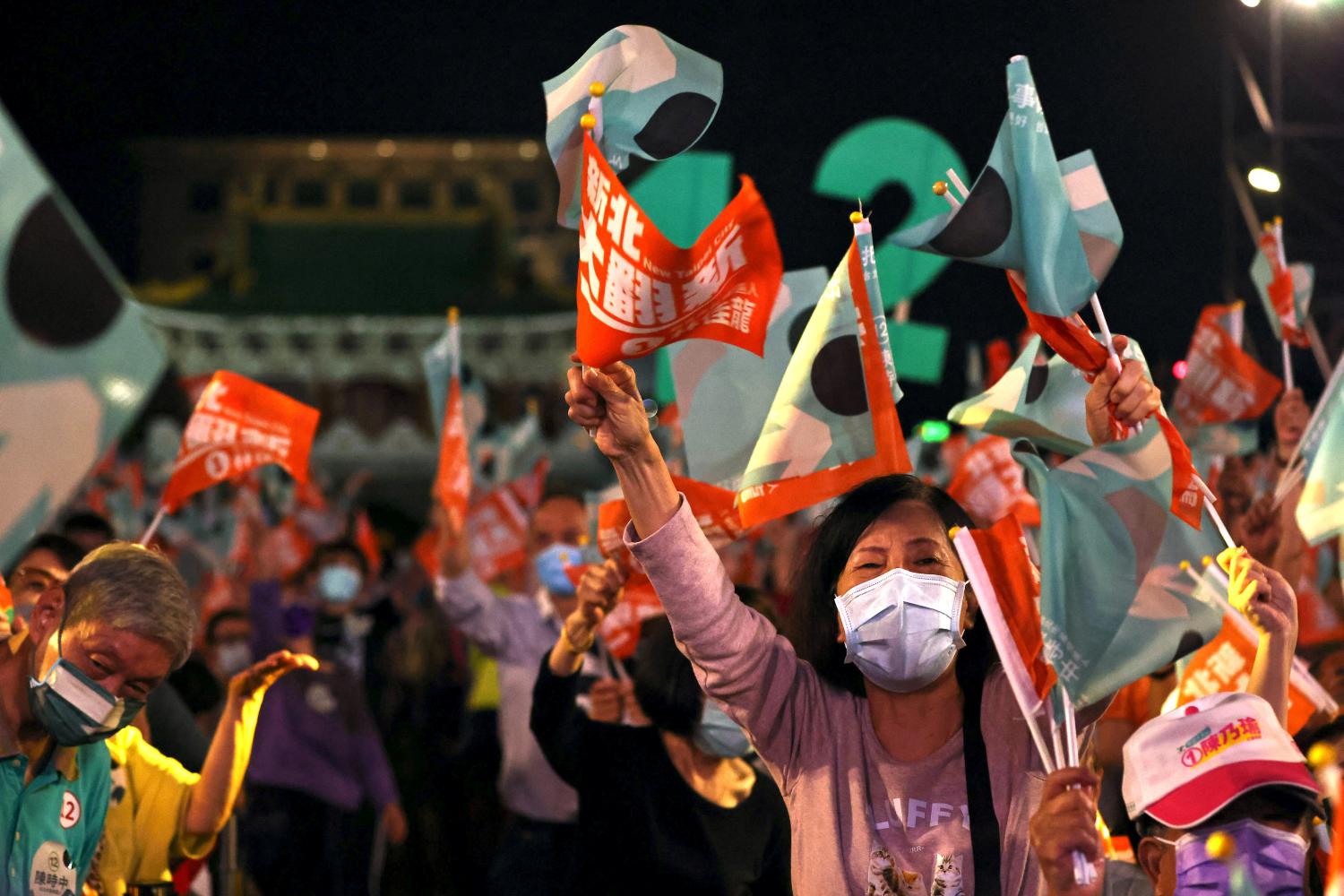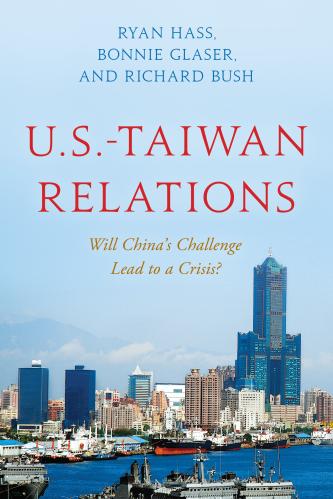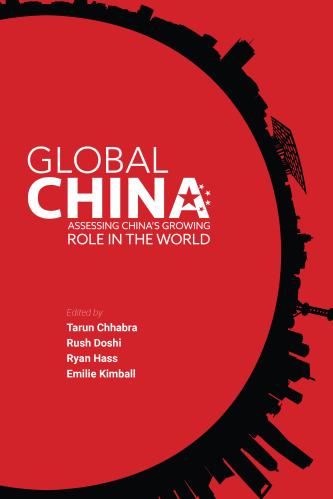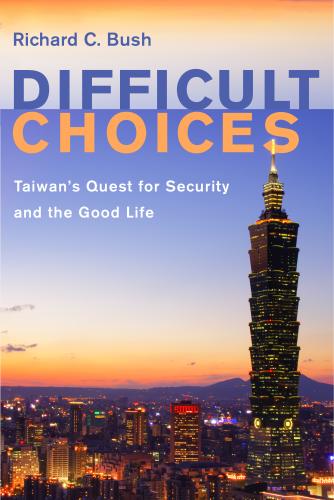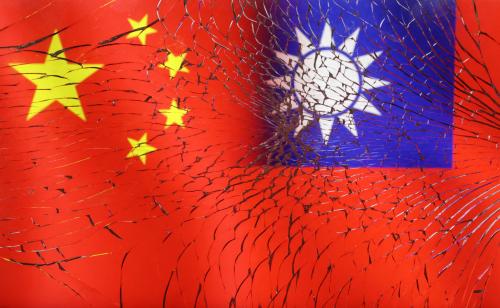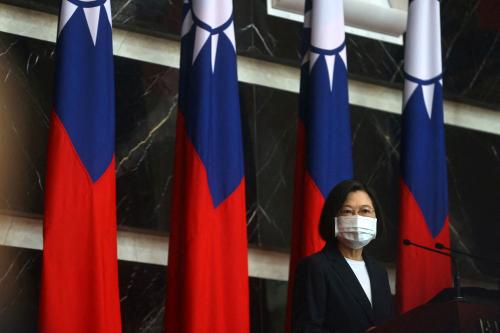Executive summary
Important transitions marking power reshuffles occurred in the United States, Taiwan, and China in 2022. The 20th National Congress of the Chinese Communist Party was held during October 16-22, producing a Politburo and Standing Committee comprised entirely of Xi Jinping’s protégés and scrapping the previous pattern of compromise and equilibrium among political factions. After the November 8 midterm elections in the United States, Republicans seized control of the House of Representatives while the Democrats’ overall performance was evidently better than expected. The “nine-in-one” local elections in Taiwan on November 26 turned out to be a major setback for the ruling Democratic Progressive Party, which won in only five of the 21 localities where magistrates or mayors were elected and lost in three localities of high political significance for a net loss of two localities. Stemming from the reshuffles are crucial factors related to each of the three political systems that would affect trilateral relations in the near future.
The 20th Party Congress and subsequent events demonstrate: 1) Xi’s further consolidated power; 2) Beijing’s continually assertive posture in the Taiwan Strait; 3) uncertainties about China’s economic outlook; 4) Xi’s greater valuation of collective objectives than that of individuals’ well-being and a greater likelihood for Xi to accommodate domestic and international demands if he perceives his power is becoming more secure; 5) the possibility that Xi’s perception of his increasingly consolidated power made him more amenable to adaptation in domestic and foreign policies; and 6) the increasing potential of future civic defiance to the pathologies of governance in China.
Major developments in the wake of Taiwan’s 2022 local elections include: 1) that mainstream public opinion rejects Beijing’s unification bid and prefers the status quo, a lingering pattern over the last three decades, but is also saliently wary of the risk of war with China; 2) that potential presidential candidates from the DPP and Kuomintang, Taiwan’s two major political parties, have taken turns to lead in public opinion polls since the end of the 2022 local elections; and 3) that none of the possible contenders for the presidency, including the potential candidate from the Taiwan People’s Party, the third-largest party, has declared to embrace unification or Taiwan independence. This is even true of William Lai from the DPP, who was often regarded as actively pro-independence.
After the U.S. midterm elections, we have seen: 1) the Biden administration’s intensified sanctions on China and heightened military assistance to Taiwan; 2) the summit between U.S. President Joe Biden and Xi and plans for future meetings between U.S. and Chinese high-ranking officials, despite the incident of a suspected Chinese spy balloon flying over the United States; 3) the meeting between current U.S. House Speaker Kevin McCarthy from the Republican Party and Taiwan’s President Tsai Ing-wen in California during Tsai’s transit visit to the United States; and 4) the newly established U.S. House Select Committee on the Strategic Competition Between the United States and the Chinese Communist Party, which seeks to dispel China’s threats to vital U.S. national interests, and the House Republicans’ possible future initiatives which may provoke Beijing due to their sovereignty implications in favor of Taiwan.
The power reshuffles above yield implications for two recent major policy debates in the United States. The first debate is about China’s “peaking power” — whether Beijing, as it sees the surge of its overall national power start to slow, cannot wait too long to turn its aggressive intentions into concrete action by grabbing what it desires, including Taiwan, which could result in a military clash with the United States. Central to the debate is the timeline for Beijing to use force against Taiwan, an issue that has grown increasingly prominent in 2022 given warnings from U.S. officials of the impending threat. Some factors emanating from China’s internal dynamics display that Beijing’s will to unify Taiwan by force may have become stronger.
Yet there are four reasons why Beijing’s invasion of Taiwan may not occur as soon as the aforementioned warnings have indicated. First, it seems probable that Xi will remain confident about China’s continuing ascent. Second, what may affect Beijing’s calculus about the timing of a military showdown is likely to be the assessment of China’s internal weaknesses in absolute terms, rather than external strengths in a relative sense. China is increasingly vulnerable to multiple systemic risks that result primarily from economic pathologies and social instability. Given how Beijing has sought, after the Party Congress, to manage the Chinese economy in ways markedly different from what had been done in the past, Beijing is apparently aware of all the vulnerabilities. Third, the factors which reflect Taiwan’s internal dynamics exhibit that neither Taiwan’s citizens nor elites have adopted a standpoint on cross-strait relations that would prompt Beijing to rush an invasion. Fourth, the dynamics from U.S. domestic politics demonstrate that the Democrats and the Republicans may exert disparate influences on Beijing’s intention over the timeline. Whereas this is the case, Tsai’s transit visit to the United States during March 30-31 and April 4-6 appears to exhibit possibilities for non-zero-sum competition between the two parties over trilateral relations. Arrangements during Tsai’s trip took place in a watered-down fashion from what was previously reported. As the two parties did not compete to bash Beijing as much as what occurred in former House Speaker Nancy Pelosi’s Taiwan visit in 2022, China’s reaction through military operations was slightly less intrusive than that of last year as well.
The assessment of the first debate is, therefore, that massive cross-strait armed conflict is by no means inevitable soon. Yet it is notable that there are alternative dynamics that shape Beijing’s intentions on the timing. For instance, if Xi’s perception of security is compromised by any trend that he regards as encouraging Taiwan independence, he will have to deliver tough responses in defense.
The second issue of policy debate is about Beijing’s main approach to forcing Taiwan into unification. On the one hand, there are abundant studies and comments that concentrate on China’s approach to an all-out invasion. On the other hand, some analyses place heavier emphasis on the threats from Chinese moves short of waging a full militarized conflict. The most common concept of such moves is perhaps China’s “gray-zone” operations (CGZO) against Taiwan. Exemplified by the CGZO literature, the distinction between China’s coercive moves and its conventional invasion in terms of their nature and intended effects begets the inference about the CGZO’s designed immediate goals. A conventional invasion is invariably regarded as directly seeking a full seizure of Taiwan. Yet CGZOs are understood as facilitating China’s unification attempt indirectly by creating long-term conditions in various domains that bolster China’s relative advantages. Pervasive in the extant literature is the premise that China has diverging timelines between the two modes of aggressive actions for the goal of unification. It is overlooked, however, that some coercive scenarios — not yet totally realized as of now — short of a full invasion may potentially speed up unification in the near term, by forcing Taiwan into negotiations instead of conquering Taiwan. The pressures for coerced negotiations cannot be overestimated if we consider factors from Taiwan’s domestic dynamics, and they would result from impacts on Taiwan’s morale and internal cohesion. The key point here is that more attention is to be paid to such Chinese acts in which the magnitude of violence falls between CGZOs and kinetic military operations, but the possible upshot may be to expedite unification under China’s terms. For Beijing, such acts appear preferable to a full invasion for multiple reasons. The most important one may be that the current U.S. tactics, whether or not strategic ambiguity or strategic clarity is a more accurate characterization of its nature at present, concentrate on preventing massive cross-strait armed conflict. The United States lacks a systematic preventive strategy regarding the type of Chinese coercions in question here.
-
Acknowledgements and disclosures
The author would like to thank the valuable support for the research in this paper from Richard Bush, Ryan Hass, and all the research staff at the Center for East Asia Policy Studies at the Brookings Institution. His appreciation also goes to Adrien Chorn, who provided very useful editorial assistance, and interviewees during his research stay at Brookings, particularly Bonnie Glaser, Bonny Lin, Jude Blanchette, and Cheng Li. He would also like to thank Adam Lammon for editing and Rachel Slattery for layout.
The Brookings Institution is committed to quality, independence, and impact.
We are supported by a diverse array of funders. In line with our values and policies, each Brookings publication represents the sole views of its author(s).

